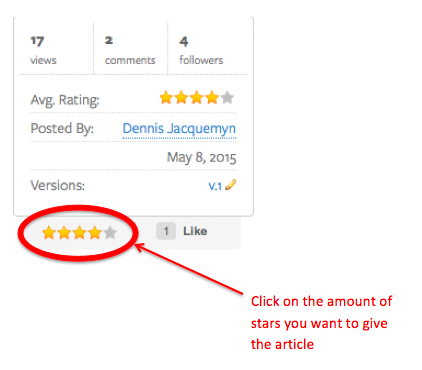Last Updated:
January 3, 2017
by
Shreya Mehta
| Version: 2
| 1,658 views
| 1 follower
members are following updates on this item.
In this manual you will find everything on liking and stars and why it's so much fun! ![]()
Before we give you tips on how to keep liking fun, we have to set some ground rules. Respect. At sCool everyone, that means all the children and the adults, need to have respect for each other. Excluding and cyberbulling will not be tolerated. If you see it happening or are experiencing it, contact a parent, a teacher or the Child of the Week for help.
People can be strange beasts sometimes, especially when it comes to social media. Even adults can be bad at liking things. Sometimes people like things to receive likes and the more you like the more you'll get back. That's not true. You should only like the things you genuinely like.
Just take a look at this mini-experiment:
A group of adults were shown a series of photos. They had to add a sticker to the ones they liked. After a while they were shown the same series of photos again but only now the photographers name was mentioned. You would think that they would still give the same photos those stickers right? But that wasn't the case. The participants started liking different photos just because they now judged the pictures on who took them than on what was on it.
We don't do this at sCool. We give a thumbs up to all the posts, articles, photos, Share-A-Thought,... we like, regardless of who posted it.
"YOU LIKE SOMETHING BECAUSE YOU LIKE IT, NOT THE PERSON WHO POSTED IT!!!"![]()
Underneath every article and document on sCool there is a like button. People click on it to show the the author that they liked their work. The amount of likes the post gets, is the amount of people that liked the post.
You can also give posts, except the Share-A-Thoughts, a star-rating. You can rate the post by giving it stars. 5 being the maximum and 1 being the minimum amount of stars you can give. The post shows the average of the amount of stars that are given to the post.
This means that the amount of star-ratings are as important as the amount of stars you get. If only one person gives them a rating of 5 stars, then the article gets an average of 5 stars, but if 100 people give it their ratings, it'll be much harder to maintain the 5-star-status because one person might think the article is worth 1 star when the other might think it's worth 4. That's why the average is shown. You can give stars by clicking on the amount of stars you want in the box on the right-hand side.

The amount of likes indicates your appreciation for the review. If you read the review on the book that you didn't really like, but the review was good, that's when you like the review.
The amount of stars indicates you appreciation for the book. If you loved the book, then you should give it 5 stars. The more stars a book has, the better the general appreciation for the book.
Beware: we always take the average! If a book only got one star, you might want to check on how many people rated. Maybe just one person gave it a bad rating because that specific person didn't like the book. That doesn't give you a general idea on the book, it just gives the opinion of one person. Chances are that you might like the book.
Sometimes less great things happen.... Now the question stands: if someone for example posts a Share-A-Thought about their grandmother passing away, can you like it or not? Liking means that you are fond of something, and you aren't really fond of their grandmother dying, now are you?
Yes even when there is bad news, we can like it. This way we show respect and sympathy for one another. If someone has fractured their leg and is hospitalized they'd like to know that people are missing them. Your like will do the trick.
Page Options